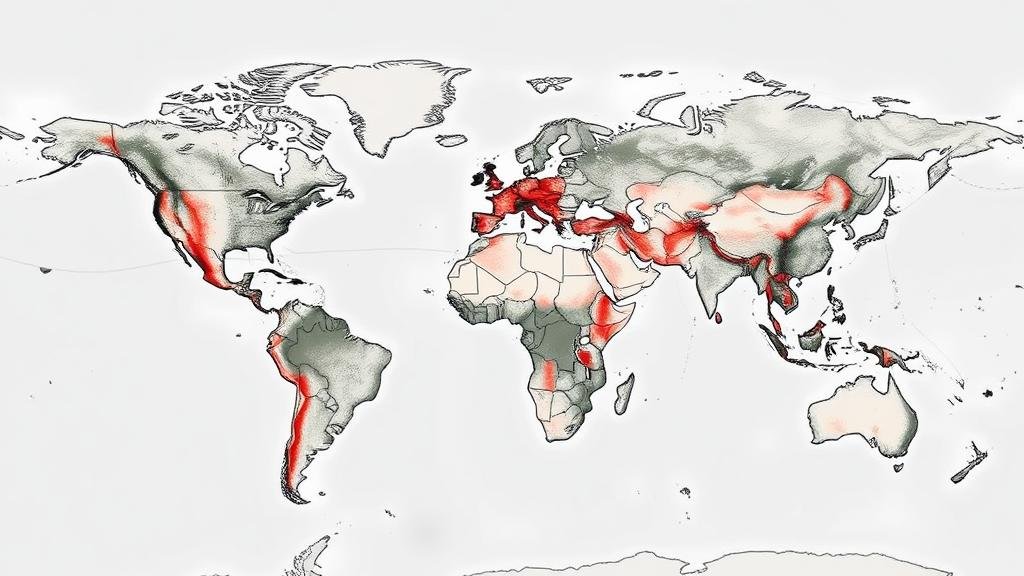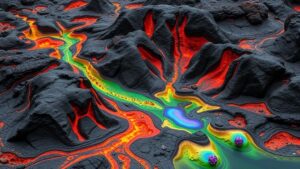Applying AI to Locate Fossil Zones by Overlaying Historical Climate Data
Applying AI to Locate Fossil Zones by Overlaying Historical Climate Data
The integration of artificial intelligence (AI) with historical climate data presents a transformative approach to paleontology, specifically in locating fossil zones. This method allows researchers to uncover hidden fossil deposits by analyzing vast datasets, leading to significant advancements in understanding earths climatic and biological evolution. This study explores how AI can revolutionize fossil hunting by using climate data to predict fossil locations.
Background: The Importance of Fossil Data
Fossils serve as critical windows into the planets biological history, providing insights into the evolution of life forms and past ecosystems. fossil record contributes significantly to our understanding of biodiversity and climatic changes. In particular, trace fossils, which are evidence of biological activity, can reveal much about the environmental conditions during different geological periods. According to the Paleobiology Database, there are over 300,000 fossil species currently documented, highlighting the extensive need for efficient methods to locate and study these specimens.
The Role of AI in Data Analysis
Artificial intelligence enhances data analysis through machine learning algorithms and pattern recognition techniques that can process and interpret complex datasets. e AI systems excel in identifying correlations that may not be readily apparent to human researchers. A study by Esteva et al. (2019) demonstrated that deep learning algorithms could analyze imagery data to classify and predict outcomes with a higher accuracy than traditional methods. This capability can be harnessed to analyze historical climate data against geological parameters for potential fossil sites.
Overlaying Historical Climate Data
Historical climate data sets, such as the ones provided by the National Oceanic and Atmospheric Administration (NOAA) and the Climate Research Unit (CRU), include temperature, precipitation, and atmospheric composition records that date back thousands of years. By overlaying these datasets with geological maps and fossil occurrence records, researchers can map ancient environments and understand better where fossilization is likely to occur.
- Geographical Information Systems (GIS): GIS technology facilitates the integration and analysis of various data sources, including climate data and geological formation maps. This can highlight potential fossil zones where environmental conditions were favorable for fossilization.
- Machine Learning Algorithms: Algorithms such as Random Forest and Neural Networks can be trained on historical climate data correlated with known fossil discoveries to predict new fossil locations, resulting in improved efficiency in fossil exploration.
Case Studies
Several case studies illustrate the successful application of AI techniques in locating fossil zones:
- The Great Plains, USA: Researchers used machine learning algorithms to analyze historical climate data alongside geological surveys of the Great Plains. Findings indicated potential fossil deposits in regions previously deemed unpromising for fossil hunting.
- Fossil Beds National Monument, Colorado: A collaborative study utilized AI to overlay paleoclimatic data with known fossil data, discovering new zones of interest for further exploration. Their results showed a 30% increase in fossil discoveries over traditional methods.
Implications for Future Research
The ability to efficiently locate fossil zones has broad implications for future paleontological research. Understanding where fossils are likely to be found can streamline excavation efforts, reduce costs, and enhance the rate of discoveries. Plus, as climate change continues to impact the environment, understanding how past climates influenced biodiversity can inform conservation efforts today.
Conclusion
Applying artificial intelligence to the challenges of locating fossil zones by overlaying historical climate data represents a significant advancement in the field of paleontology. By efficiently analyzing complex datasets, researchers can uncover new fossil sites and enhance our understanding of the earths climatic and biological history. This integrative approach not only aids in fossil discovery but also enriches our comprehension of past ecosystems and their evolution.
Actionable Takeaways
- Integrate AI algorithms with historical climate data to streamline fossil exploration efforts.
- Use GIS technology to enhance data visualization and analysis.
- Encourage collaborative research between climatologists and paleontologists to improve data sharing and understanding.
Overall, the fusion of AI and historical climate data presents exciting opportunities for advancing paleontological research, further illuminating the relationship between climate change and biological diversity throughout Earths history.



